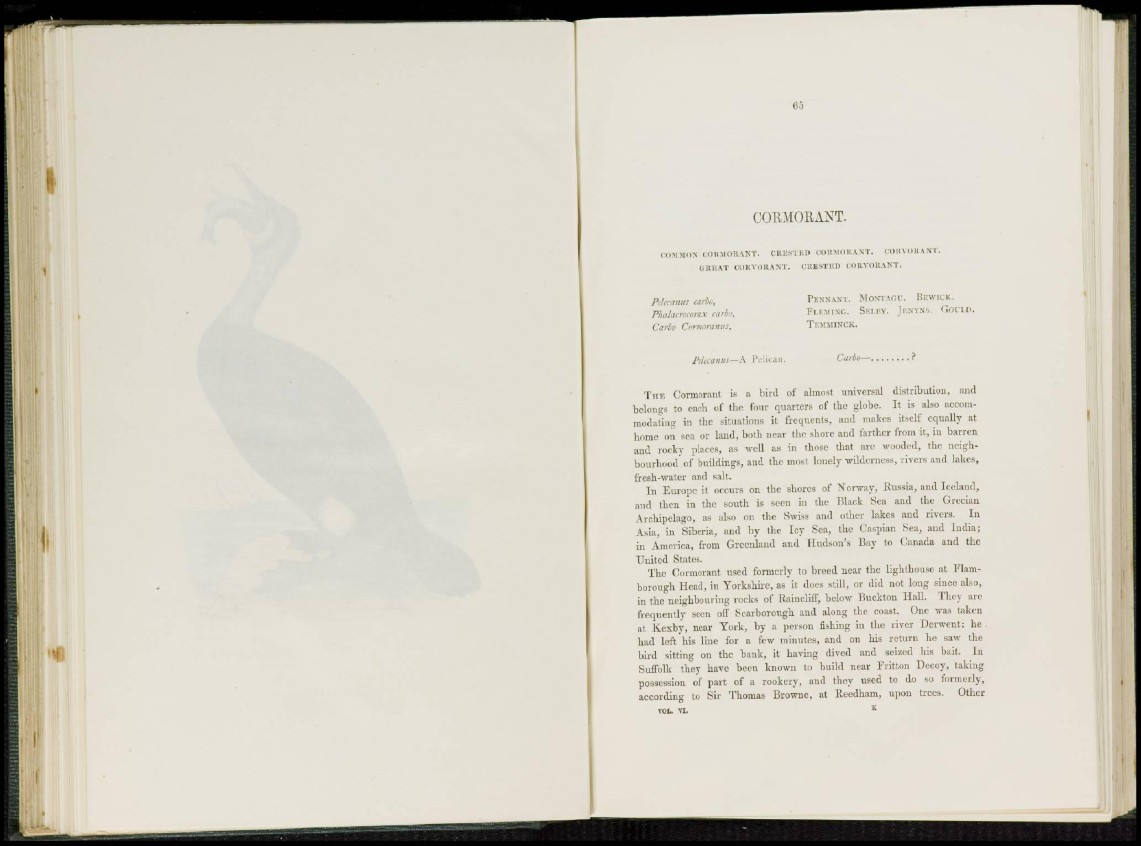
CORMORANT.
COMMON CORMORANT. CRESTED CORMORANT. CORVORANT.
GREAT CORVORANT. ORBSTBTJ CORVORANT.
Prfecanus carbo, PENNANT. MONTAOTT. BE W I CJ
Phalacrocorax carbo, FLEMING. SELBY. J ENVNS. G
Carbo Connoranus, TEMMINCK.
Pelecanus—k Pelican. Carlo— f
T H E Cormorant is a bird of almost universal distribution, and
belongs to each of the four quarters of the globe. It is also accommodating
in the situations it frequents, and makes itself equally at
home on sea or land, both near the shore and farther from it, in barren
and rocky places, as well as in those that are wooded, the neighbourhood
of buildings, and the most lonely wilderness, rivers and lakes,
fresh-water and salt.
I n Europe it occurs on the shores of Norway, Russia, and Iceland,
and then in the south is seen in the Black Sea and the Grecian
Archipelago, as also on the Swiss and other lakes and rivers. In
Asia, in Siberia, and by the Icy Sea, the Caspian Sea, and India;
in America, from Greenland and Hudson's Bay to Canada and the
United States.
The Cormorant used formerly to breed near the lighthouse at Flamborough
Head, in Yorkshire, as it does still, or did not long since also,
in the neighbouring rocks of Rain cliff, below Buckton Hall. They arc
frequently seen off Scarborough and along the coast. One was taken
at Kexby, near York, by a person fishing in the river Derwent: he .
had left his line for a few minutes, and on his return he saw the
bird sitting on the bank, it having dived and seized his bait. In
Suffolk they have been known to build near Fritton Decoy, taking
possession of part of a rookery, and they used to do so formerly,
according to Sir Thomas Browne, at Reedham, upon trees. Other
VOIi. VI. K